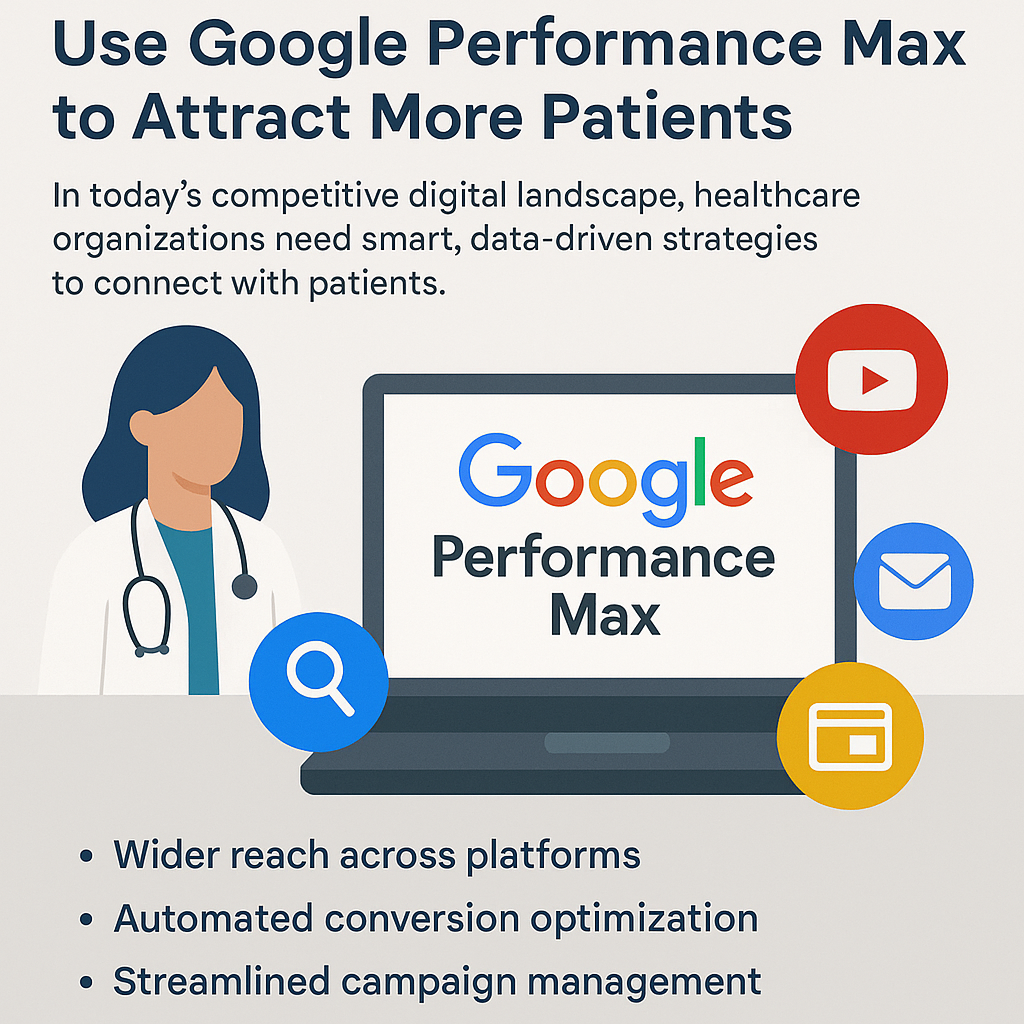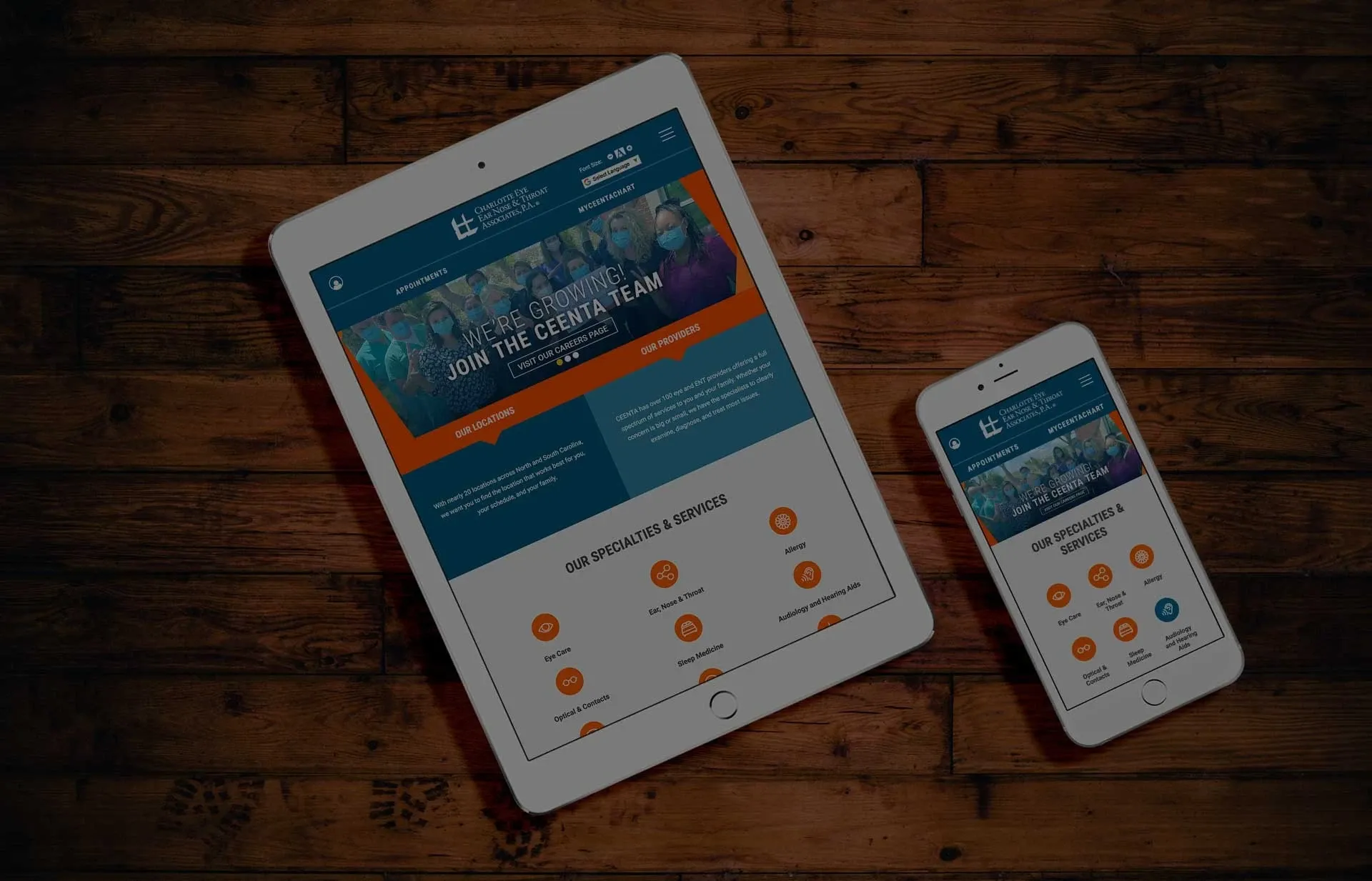In today’s competitive digital landscape, healthcare organizations need smart, data-driven strategies to connect with patients. One of the most effective tools available is Google Performance Max (PMAX)—a fully automated campaign type designed to drive results across all of Google’s platforms.
In this guide, you’ll learn how PMAX works, when to use it (and when not to), and how to optimize it for better patient engagement and ROI.

What Is Google Performance Max (PMAX)?
Google Performance Max is an AI-powered advertising campaign that runs across all of Google’s channels—including Search, Display, YouTube, Gmail, Maps, and Discover. Instead of managing multiple ad types manually, PMAX automates placements, bidding, and targeting using machine learning.
For healthcare providers, this means:
- Wider reach across platforms
- Automated conversion optimization
- Streamlined campaign management
When Should Healthcare Providers Use PMAX?
PMAX is ideal for healthcare businesses when:
1. You Want to Maximize Reach
Reach potential patients across all Google channels without running separate campaigns.
2. Your Goal Is Lead Generation
Whether you need more appointment bookings, phone calls, or form submissions—PMAX optimizes for conversions.
3. You Have High-Quality Ad Assets
Strong visuals, videos, and persuasive ad copy are key to success with PMAX.
4. You Have a Clear Conversion Strategy
Defined goals (like appointment bookings or consultation sign-ups) and accurate tracking improve campaign performance.
When to Avoid PMAX
PMAX may not be the right fit if:
- You need full control over keywords.
- Your budget is very limited.
- You don’t have quality images, videos, or copy.
How to Optimize Google Performance Max for Healthcare
Success with PMAX comes down to setup and strategy. Here’s how to get it right:
Set Clear Goals
Track specific actions like form submissions, phone calls, or bookings. Use Google Tag Manager and GA4 for accurate conversion data.
Use Strong Creative Assets
Provide Google with:
- 5+ high-quality images
- 1–2 short videos
- Multiple headlines and descriptions
- Clear calls to action (e.g., “Book Your Consultation Today”)
Leverage Audience Signals
Guide Google’s AI by targeting:
- Past website visitors
- Customer lists (e.g., former patients)
- In-market audiences actively researching healthcare services
Optimize Bidding & Budget
Start with at least $50–$100/day. Use Maximize Conversions to begin, then test Target CPA or ROAS once you gather data.
Use Smart Location Targeting
Focus on your service areas using radius targeting, and include location extensions to display your clinic’s contact info.
Retarget Interested Users
Re-engage users who visited your site but didn’t convert using dynamic retargeting and custom messages.
Monitor Performance
Use the Insights tab in Google Ads to track asset and audience performance. Pause underperforming assets and double down on what’s working.
Be Patient
Allow at least 4–6 weeks for PMAX to exit the learning phase before making major changes.
What Are Conversion Signals—and Why Do They Matter?
Conversion signals are actions users take that indicate a high chance of becoming a patient. Examples:
- Online appointment bookings
- Click-to-call actions
- Visits to treatment-specific pages
- Map or direction requests
Accurate signals help Google’s AI find users more likely to convert, boosting ROI and reducing wasted ad spend.
Common PMAX FAQs
Does PMAX use keywords?
Not traditional keywords. PMAX relies on audience signals and search intent, guided by optional "search themes."
Can you add negative keywords?
Yes—at the account level. This helps avoid irrelevant traffic and wasted budget.
PMAX vs. Search Ads?
PMAX offers broader reach; Search Ads offer more control. Many healthcare marketers use both together strategically.
How long does PMAX take to optimize?
Typically 2–6 weeks to fully optimize, depending on data volume and budget.
Start Your Healthcare PMAX Campaign with Sachs Marketing Group
At Sachs Marketing Group, we specialize in helping healthcare providers grow with smart, targeted digital campaigns. Our experts build, manage, and optimize Performance Max strategies tailored to your goals—whether it’s new patient acquisition, appointment bookings, or brand awareness.
✅ Custom strategy development
✅ High-quality creative asset management
✅ Conversion tracking setup
✅ Ongoing performance optimization
Let’s turn clicks into patients.
Contact us today to start your PMAX campaign and grow your practice with confidence.

About the Author
Sean Brady, Director of Marketing
Sean oversees all campaign strategy at E-dreamz. As a paid media expert with nearly 20 years experience conceptualizing and crafting high-performing paid search search campaigns, Sean ensures success for all of our marketing clients. Whether the goal is patient acquisition, brand visibility or awareness, Sean and his team deliver the results our clients expect. Sean knows the Google Ads platform inside-and-out, and is our chief thought leader for recognizing and adapting to industry changes as they relate to healthcare ad management.
« Back to Blog
Ready to Get Started? Contact Us Today to Schedule Your Discovery.

© 2025. All rights reserved. E-dreamz, Inc.

